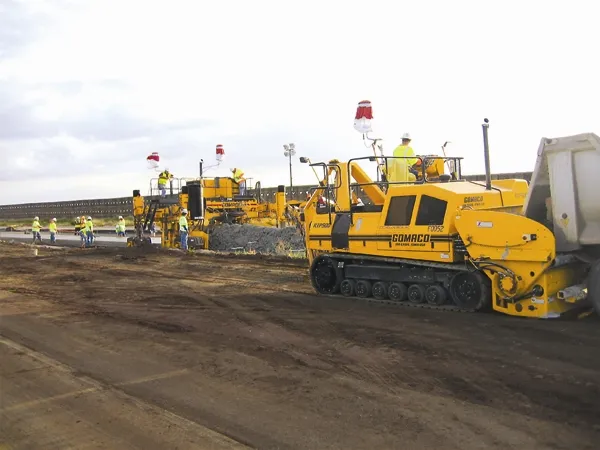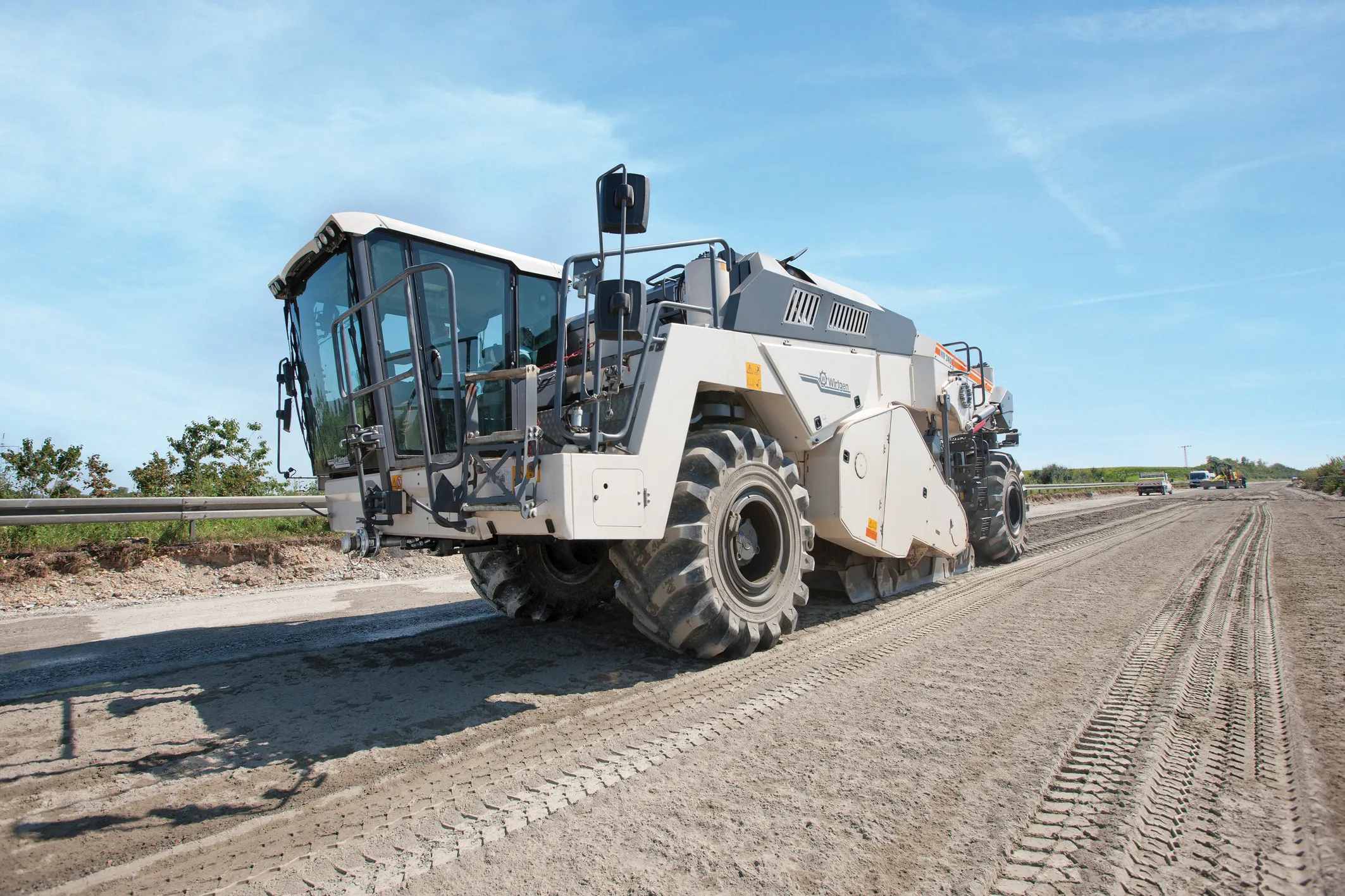
Developments in barrier technology continue to make roads safer for drivers - Mike Woof writes
Continuously slipformed concrete barriers reinforced with steel are now widely used in central line dividers on highways, in the US and Europe as well as elsewhere, to minimise the risk of crossover accidents with heavy vehicles. The Jersey type barriers are used frequently, with variations to suit local requirements and much of the US and European network now features slipformed barriers. This type of barrier features a wide base that offers structural rigidity and various slipformer manufacturers, such as US-based
Steel barrier technology also continues to develop. And from
This technology uses forces under tension rather than extrusion, which can deliver safer, more predictable outcomes after an impact according to Barrier Systems. Low angled impacts on a tension terminal end will transfer energy back to the anchor, behind the vehicle, as well as to the rail in front of the vehicle. These cables provide lateral strength to the system to allow it to overcome the force of the vehicle travelling in a different axis, resulting in the vehicle being redirected around to follow the path of the cables.
Absorbing impact forces at the impact head rather than being transferred down the rail is said to provide superior vehicle control and energy absorbing capabilities. The X-Tension System is said to be easy to install, can be set in a tangent or flared pattern, and uses many non-proprietary guardrail components to minimise improper installations. The lightweight impact head will not bow and become misaligned with the guardrail to simplify maintenance. The tension technology also shortens the length of the system and provides redirective, non-gating performance. The company says that the redirective, non-gating performance means clear zone grading begins at post one rather than post three as with earlier gating terminals. The use of many common guardrail components and a lightweight impact head helps keep inventory costs low. The X-Tension Terminal is available with either wood or steel posts and with either wood or composite blockouts.
French firm Tertu has been a pioneer of timber-faced guardrail for use in highway applications. These types of guard rail are now offered by a number of manufacturers and are often used in scenic areas to reduce the visual impact of the barrier, while ensuring safety for road users with the installation of compliant products. Wood treatment ensures that the material offers a long service life to match that of the steel reinforcement.
The company first introduced a timber-faced guard rail range in France over 20 years ago and has continuously updated this range to ensure it meets the latest European regulations. Having built a strong market in its home market of France for its products, Tertu began exporting in 2000 and has had sales success in 25 other countries in Europe, as well as further afield. The European nations include Andorra, Austria, Belgium, Cyprus, the Czech Republic, Denmark, Estonia, Germany, Ireland, Italy, Latvia, Lithuania, Luxembourg, the Netherlands, Norway, Portugal, Slovenia, Spain, Switzerland, Sweden and the UK. And the firm also has agents or licensing arrangements in Chile, New Zealand, South Korea and the US. The latest of its corporate developments was its establishment of a subsidiary operation in Shanghai in 2011, while exports currently account for some 40% of Tertu’s turnover.
All the Tertu barrier units are crash tested according to the European EN1317 standards and are CE marked. The range does include several containment levels N2 and H2 systems and even a TL 3 NCHRP 350 approved guardrail. All the Tertu barrier units are said to be highly reliable and easy to install and this includes the new products the firm is introducing. The latest development is the TM 18 4M, which has been successfully tested at containment level N2 and highlights the company’s plan to maintain its strong market presence through investing heavily in research and development. This new barrier product does offer a W 5 working width of 1.7m and uses a 4m post spacing. The new Tertu system is said to provide cost benefits as well as faster installation compared with some competing products designed to meet the same containment performance, but using a 2m post spacing.
The company further highlights its investment in research and development with the news that more innovative safety products are due for testing in the near future.
Post protection
US firm Pexco says that its new DP 200 EFX City Post offers high performance and a slim, sleek profile. The unit can be rotated into position and is made from polyurethane, offering a long life. The one piece channeliser post is said to rebound quickly when impacted and has benefited from recent manufacturing improvements to increase its durability.
In addition the post has a new top cap with four holes in the top that allow air to escape during impacts. And the post now has improved cosmetics with a higher sheen, giving it the look of an expensive steel bollard, combined with the flexibility and durability of engineered plastic polymers. The City Posts were subjected to tough endurance testing at the Texas Transportation Institute (TTI), with every post surviving 90 impacts at 88km/h and half even coped with 100 impacts. This was designed to subject the posts to the NTPEP test protocol requiring both bumper and wheel-over impacts. Channeliser posts are sometimes subject to low-speed crushing forces from heavy vehicles such as tow trucks but the 100% polyurethane City Post resists these forces and rebounds to within 5° of the vertical, little the worse for wear.
Key benefits of using the City Post include minimal maintenance, no base to become dislodged, a single post for both high speed and low speed installations, easy spin installation and removal, and long life. And the main features of the DP 200 EFX City Post are high-performance, durability, one-piece construction and no base to become dislodged, 360° visibility and a slim, sleek profile.








